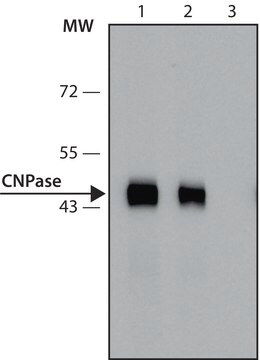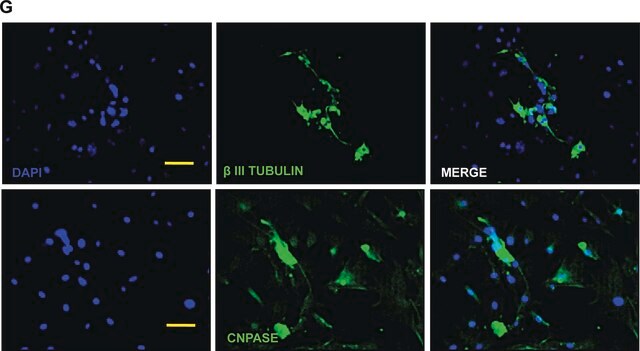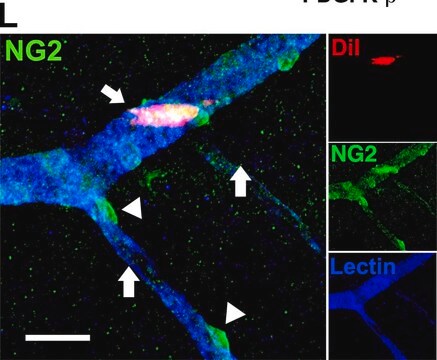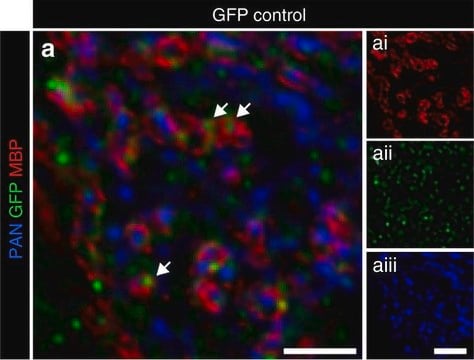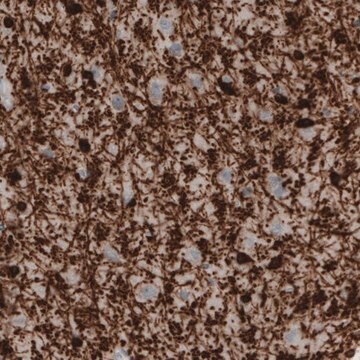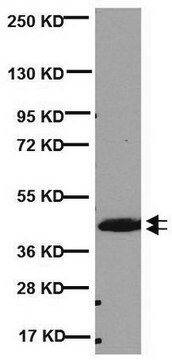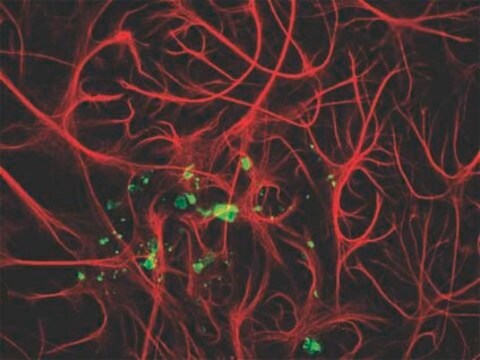C5922
Monoclonal Anti-CNPase antibody produced in mouse
clone 11-5B, ascites fluid
Synonyme(s) :
Anti-CNP1, Anti-HLD20
About This Item
Produits recommandés
Source biologique
mouse
Niveau de qualité
Conjugué
unconjugated
Forme d'anticorps
ascites fluid
Type de produit anticorps
primary antibodies
Clone
11-5B, monoclonal
Contient
15 mM sodium azide
Espèces réactives
mouse, rat, bovine, canine, pig, human, rabbit, sheep
Ne doit pas réagir avec
guinea pig, chicken
Technique(s)
immunohistochemistry: suitable using brain sections
indirect ELISA: suitable
microarray: suitable
western blot: 1:500 using fresh bovine brain extract
Isotype
IgG1
Numéro d'accès UniProt
Conditions d'expédition
dry ice
Température de stockage
−20°C
Modification post-traductionnelle de la cible
unmodified
Informations sur le gène
human ... CNP(1267)
mouse ... Cnp(12799)
rat ... Cnp(25275)
Description générale
The enzyme isolated from mammalian brain is primarily a mixed dimer of approximately 94 kDa. The dimer consists of a varied proportion of CNP1 (46 kDa) and CNP2 (48 kDa) subunits in various species. The high levels of CNPase observed in oligodendrocytes and Schwann cells portend a vital role of this enzyme in the normal function of these cells. They are distinguished from nearly all other cells by their ability to synthesize and maintain vast amounts of multilamellar membrane, known as myelin. It seems very likely that CNPase is expressed at high levels in these particular cells to facilitate the elaboration and maintenance of myelin or to carry out functions imposed or afforded by the unique membrane structure of myelin. Since the enzyme is a myelin-associated enzyme, it is of considerable interest in the study of diseases and disorders in which myelin is affected, such as multiple sclerosis, subacute sclerosing panencephalitis, acquired immunodefi ciency with CNS involvement, peripheral neuropathies, etc. Another important use is the study of reinnervation of the neuromuscular junction and the identification of oligodendrocyte progenitor cells, very early in postnatal development.
Spécificité
Immunogène
Application
Clause de non-responsabilité
Vous ne trouvez pas le bon produit ?
Essayez notre Outil de sélection de produits.
En option
Code de la classe de stockage
11 - Combustible Solids
Classe de danger pour l'eau (WGK)
WGK 1
Faites votre choix parmi les versions les plus récentes :
Déjà en possession de ce produit ?
Retrouvez la documentation relative aux produits que vous avez récemment achetés dans la Bibliothèque de documents.
Notre équipe de scientifiques dispose d'une expérience dans tous les secteurs de la recherche, notamment en sciences de la vie, science des matériaux, synthèse chimique, chromatographie, analyse et dans de nombreux autres domaines..
Contacter notre Service technique